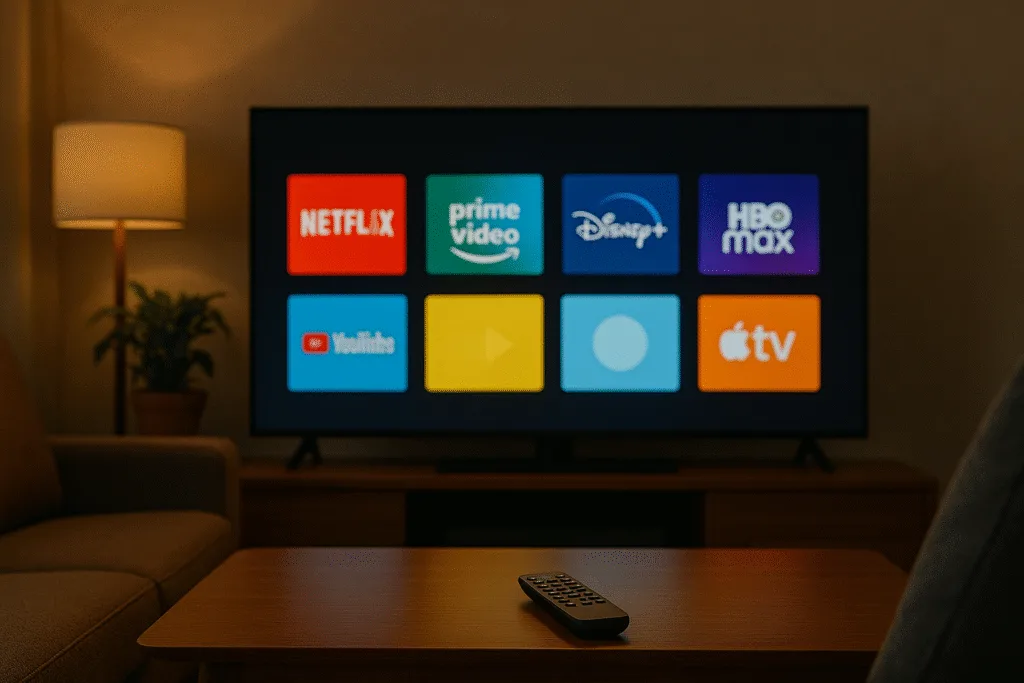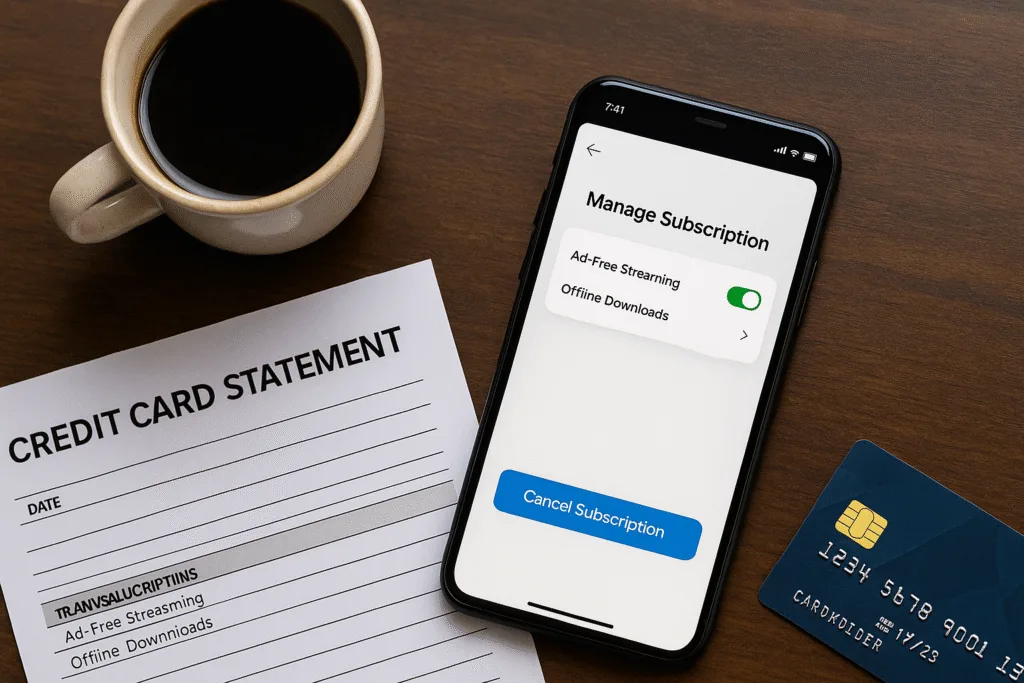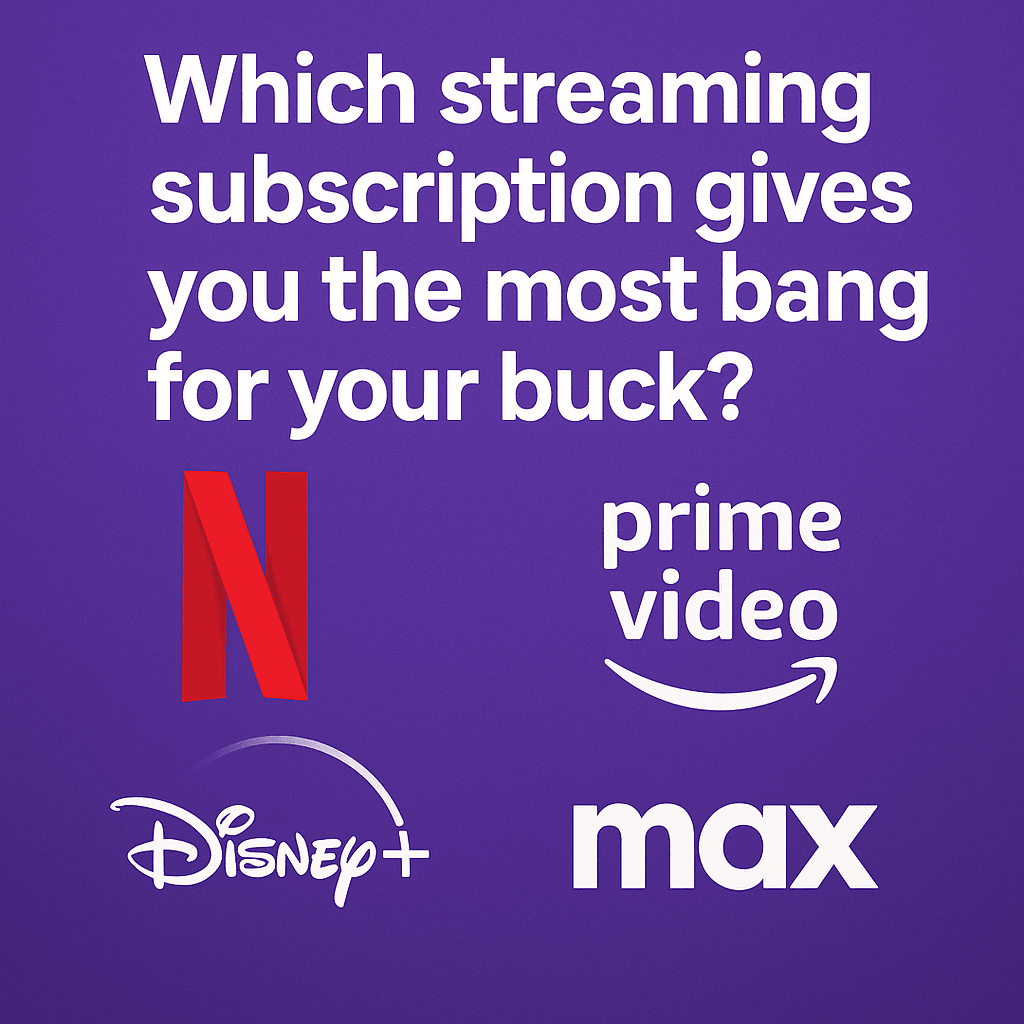Best Video Streaming Services Battle: Which Ones Are Worth Your Money?
If you are trying to find the best streaming services without blowing your budget, you are not alone. “Cutting the cord” was supposed to save us money, but with so many apps now, nearly half of consumers worry that juggling streaming platforms could end up more expensive than old cable TV. The good news? You do not actually need every service. In fact, choosing wisely (and cutting the rest) can keep your entertainment budget under control while still giving you plenty to watch. I have a pretty strong opinion here: it is entirely possible to enjoy your favorite shows and movies and save money, if you know which streaming subscriptions are truly worth it.
Let me start with a quick personal story. Not long ago, I realized I was paying for five different streaming services at once. My credit card bill looked like a streaming-service bingo card! I learned I am not alone: the average American shells out about $77 per month on streaming subscriptions, which was exactly my situation. I was basically re-creating a cable bill with Netflix, Hulu, Disney+, Prime Video, you name it. Once I noticed this, I decided to make a change. I canceled two of them right away and started rotating the others month to month. Lesson learned: you can save a bundle by not trying to keep up with every new show at the same time. My streaming habit is much leaner now, and I honestly do not miss a thing (except maybe not knowing what to watch first when I do resubscribe!).

Content vs. Cost: Comparing the Top Streaming Platforms
All streaming services are not created equal. Each has its own mix of content, features, and price points. Here is a quick rundown of the major players and what you get with each:
- Netflix – Massive library and originals in every genre. But recent price hikes have made Netflix one of the priciest options. If you crave variety and buzzy originals, Netflix still leads, but you will pay for it.
- Disney+ – The go to for families, Marvel and Star Wars fans. Disney+ offers a ton of franchise content at a moderate price, especially if you bundle it with Hulu and ESPN+. The Disney Bundle with Hulu and ESPN+ can be a great deal.
- Hulu – Best for network TV lovers and a deep back catalog of shows. Hulu’s basic plan has ads but keeps costs low. It carries many current TV episodes the next day, which is perfect if you have ditched cable. Ad free Hulu costs more, so you will have to decide if skipping commercials is worth the extra cash.
- Max (formerly HBO Max) – Home of HBO originals and tons of prestige content, plus movies and Discovery+ reality shows under one roof. Max is not cheap. It delivers high quality series, but consider whether you need it year round. Insider tip: HBO series are perfect for subscribing for a month or two, bingeing, then canceling until the next big show drops.
- Amazon Prime Video – Solid all around library with some premium originals, and it comes “free” with an Amazon Prime membership. If you already pay for Prime shipping, Prime Video is a nice perk. Just note Amazon began adding ads; you can pay extra to remove them. The upside: Prime Video also lets you rent or buy new releases à la carte, which can fill gaps if a movie is not on your subscriptions.
- Apple TV+ – The underdog with high quality originals. Apple TV+ is one of the cheaper paid services and has no ads by default. The catch is a smaller catalog. It does not have older licensed shows, mostly just Apple’s own series and films. It is fantastic for its price, but more of a supplement to the big libraries than a one stop shop.
And do not forget free streaming services like Tubi, Pluto TV, or Freevee. These ad supported platforms cost $0 and have huge libraries of older shows and movies. Tubi, for example, is completely free (you just sit through a few ads) and offers a surprisingly decent selection of content. Free services are not loaded with the hottest new exclusives, but they are excellent for supplementing your paid subscriptions or for when you are on a strict budget. After all, free is a hard price to beat.

How to Save Money on Streaming (Pro Tips and Pitfalls)
1. Rotate your subscriptions. You do not need to maintain every service all at once. A smart trick is to subscribe to one or two at a time, binge what you want, then switch. For example, I only pay for Netflix during months when there is a new season of something I love, then I cancel and move to Disney+ or HBO for a while. This rotation strategy can cut your streaming bill significantly and keeps you from subscription overload.
2. Take advantage of bundles and deals. As mentioned, bundling Disney+ with Hulu (and optionally ESPN+) saves a lot compared to separate plans. There are even mega bundles that provide a ton of content for one price. Also check your wireless or internet provider’s offers. Many phone plans and ISPs throw in a streaming subscription free or at a discount. For instance, some carriers include Netflix or Apple TV+, and Walmart+ includes Paramount+. Always double check the terms. Sometimes the free year turns into auto billing in year two if you forget to cancel.
3. Do not ignore the ad supported tiers. Almost every major streaming service now offers a cheaper plan with ads. In many cases, the ad supported version costs about half as much as the ad free plan. If you can tolerate a few commercial breaks, you can enjoy the same content at a steep discount. Just be aware that a couple of platforms limit features on the basic tier, for example no downloads for offline viewing and slightly lower video quality. Still, downgrading to the with ads plan can be an easy immediate way to save a few bucks each month per service.
4. Watch out for sneaky extra charges. Streaming has few hidden fees, but there are some pitfalls to note. One example is password sharing crackdowns that add an “extra member” fee if someone outside your household uses your account. Another example is ad surcharges or premium features like 4K streaming costing more. And of course, the classic gotcha is free trials that roll into paid plans if you forget to cancel. Set reminders for trial end dates so you are not unknowingly paying for something you meant to be free.
5. Regularly audit your subscriptions. Once every few months, take stock of what you are paying for. It is easy to lose track. Many people admit they have forgotten about a subscription they were still paying for. Do not be that person. If you realize you have not watched Hulu in two months, cancel it (you can always restart later). Multiple small charges add up fast. A quick audit and canceling the idle services can save you hundreds per year.
Which Streaming Service Is Best for You?
At the end of the day, the best streaming service comes down to your personal taste and how much you want to spend. There is no one size fits all answer, and any site that claims “Netflix is definitively the best for everyone” is oversimplifying it. Here is a rule of thumb to determine your winner: pick the service that has most of the content you cannot live without, and drop (or delay) the rest. Make a short list of the shows, movies, or sports you must have in the next month or two. If most of them are on, say, Disney+ and Hulu, then those two might be your best streaming combo for now. Someone else might be all about HBO or Prime Video originals. Go where your favorites are.
For overall value, some services do stand out. Netflix still offers the broadest content variety, but it is also the most expensive. Disney+ (especially bundled) is hard to beat for families or fans of its franchises. Hulu is excellent for a steady drip of TV series, and its low cost ad plan keeps it affordable. Prime Video is a great all in one bonus if you are already an Amazon Prime member. You sort of get it by default. And if you are really budget conscious, combining one paid service at a time with one or two free services (like Tubi) can keep you entertained around the clock at minimal cost.
My personal take: the best streaming setup is usually one premium service plus one budget or free service at any given time. For example, in a given month I might do Netflix (paid) plus Pluto TV (free), and the next month switch to Disney+ (paid) plus Tubi (free). This way I always have something new to watch, but I am only paying for what I am actively using. It requires a tiny bit of effort to swap subscriptions, but the savings are absolutely worth it. I went from nearly $50 per month in streaming costs down to about $15 by rotating strategically. And I still see all the shows I want, just not all at the exact same time. That is a trade off I will take to keep more money in my pocket.
Bottom line: Comparing streaming services is the key to getting your money’s worth. The top video streaming platforms each have their strengths. Some excel in content, others in value. By knowing what each service offers and by staying on top of your subscription habit, you can determine which streaming services are the best for you and ditch the rest. You will enjoy your binge watches even more when you know you are also saving money in the process. 🎉
External Resources
- CordCutting.com: The Best Streaming Services in 2025
- Kiplinger: How Much We Spend on Streaming Services
- CableTV: History of Streaming Service Price Hikes
- Consumer Reports: Guide to Streaming Video Services
- C+R Research: Subscription Services Statistics
Related Articles:
- Best Cheap Internet Plans 2025: Unbeatable Deals Now
- The Ultimate Guide to Cancel Unwanted Subscriptions & Save $1600+
- Best Indoor TV Antennas (2025): Real-World Picks & Setup Tips
- Free TV Options in 2025: Streaming, Antennas & Local Channels
- Cheapest Ways to Get ESPN That Actually Work
Disclaimer: SaveMeMonthly.com provides general money-saving info, not financial, legal, tax, insurance, or professional advice. Offers, rates, and terms change and vary by location. Always confirm details with the provider before you buy. We may earn a commission from some links at no extra cost to you. Trademarks belong to their owners. Your choices are your responsibility.


Leave a Reply